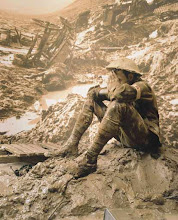I hate wearing a wet sock on my head…It makes my skin break out...It does not have a visor, does not shield the sun, does not absorb sweat well...
Listening to soldiers complain about the beret makes it easy to understand why a headpiece that has been associated with soldiery for over a century is so deeply unpopular with the modern military man.
And to appreciate why the army is abandoning the beret.
Yes, despite adding a dashing suggestion of French élan to the otherwise benighted military costume, the army has decided to replace the beret with the pedestrian patrol cap. No longer will the beret nestle atop a shoulder or sardonically fall across a soldier’s brow.
No longer, that is, in the US army. Because the attention grabbing announcement doing away with the beret was made by the American military. Israel, which embraced the beret in the 1950s to counter the ragtag attitude of its infant armed forces, has no plans to abandon the most iconic symbol of the modern Maccabee.
In the Israeli army, the beret (kumta) is a mandatory item in a soldier’s dress uniform. Tucked neatly atop the shoulder, it is only worn during formal ceremonies. In the infantry, where the everyday uniform is a less formal green set of fatigues, a beret or field cap must be on the shoulder or head whenever soldiers are on base. Elite units play by a different set of rules, so when I arrived in the paratroops from my former air force unit I was unused to wearing my beret unless I was heading home for the weekend.
I also gave less thought to my beret because soldiers in the air force posses the force’s distinctive coal colored beret from day one. Infantry soldiers do not receive their berets so easily. For most of their training, infantry troops wear the dull green beret they receive when they first join the army (this beret is hence known as a kumtat bakum, after the name of the induction base: Bakum). The colored berets unique to each brigade (brown to Golani, purple to Givati, neon green to Nachal, maroon to Paratroops, camouflage to Kfir) are obtained after a long and grueling march (known as the masa kumta, beret march) that typically represents the culmination of training. The march ends with a festive yet formal ceremony, the tekes kumta (beret ceremony), where commanders hand out the coveted colored berets, with a favorite soldier typically receiving the commander’s own beret as a special honor.
Regardless of how the Israeli soldier earns his beret, the rules of what to do with it are very clear. Some prefer to spray their new berets with deodorant and then set them on fire, other rely on the old school shaving knife, but the objective is the same: to rid the beret of its fuzzy exterior and reduce it to a dry leather-like carcass. Berets that have not undergone this treatment, not been shiftzured in army lingo, are mockingly referred to as chatulot (cats) for their fluffy fur. A beret in this condition screams of a rookie soldier, a tzair (youngster) deserving of scathing mockery.
The rush to look like a veteran soldier is such that berets are torched and nearly cut to pieces. The worst part is, as every soldier who has used his beret as an emergency pillow on a bus will attest, is that a defluffed beret makes a horrible sleeping companion, and frankly resembles a dried doormat more than anything else. Save for a few cursory passes with a sharp blade, I kept my berets nice and fuzzy and never had a reason for regret.
Saturday, July 9, 2011
Subscribe to:
Post Comments (Atom)




Super artykuł. Pozdrawiam serdecznie.
ReplyDeleteŚwietny wpis. Jestem pod wrażeniem.
ReplyDeleteWygląda to super. Pozdrawiam.
ReplyDeleteSuper artykuł. Pozdrawiam serdecznie.
ReplyDelete